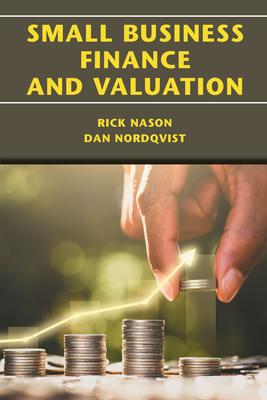QUESTION 2 A. The following balances were extracted from Manis Bhd's trial balance as at 31 December 2019. RM Land at cost Building at cost Machines at cost Bearer plants - oil palm at cost (mature) Bearer plants - oil palm at cost (im-mature) Biological asset - sugarcane plants at fair value less costs to sell Accumulated depreciation as at 31 December 2019 - building Accumulated depreciation as at 31 December 2019 - machines Accumulated depreciation as at 31 December 2019 oil palm (mature) Operating costs (refer to note 3) 10,000,000 8,000,000 500,000 9,000,000 800,000 refer to note 1 800,000 100,000 900,000 18,400,000 Additional information: 1. Manis Bhd cultivated sugarcane plants on a 10-hectare land. The grow-out period takes about 12 months. As at 31 December 2019, the biological asset of the company consisted of: Sugarcane Plants Im-mature Mature RM'000 RM'000 4,500 7,000 5,200 8,000 As at 1 January 2019 As at 31 December 2019 2. 3 During the year 2019, the total fair value less costs to sell of the harvested sugarcane is estimated at RM10,000,000. 60% of the total fair value less costs to sell of the harvested sugarcane was used for production of refined sugar and the remainder of the fair value less costs to sell of the harvested sugarcane was sold to third parties. Revenues from sales of refined sugar for the year amounted to RM20,000,000 The operating costs were incurred for the followings: RM Administrative expenses (includes the current year depreciation) 8,000,000 Distribution costs 2,500,000 Other operating expenses 3,500,000 Labour costs for refined sugar production 2,000,000 Production overheads for refined sugar production 2.400,000 There were no closing inventories of harvested sugarcane and refined sugar. 4. a. ii. a Required: Prepare the followings: i. Statement of Profit or Loss of Manis Bhd for the year ended 31 December 2019. (5 marks) Statement of Financial Position (extract) as at 31 December 2019 together with the note on Property, plant and equipment b. Biological assets (5 marks) b. Discuss, why the fair value model is the best measurement basis to measure biological assets in accordance to MFRS 141 Agriculture. (5 marks) There is diverse method of accounting for mineral resources practised by the entities engaged in the extractive operations. In Malaysia, the predominant method of accounting for mineral resources is the successful effort method. Gas Bhd is a company which is based in Malaysia. Currently, it treats its petroleum operation cost in accordance with the expense and reinstatement method of accounting. Some users of the accounting information argued that this method is subject to abuses because of the differing ways of treating reinstatement of the previously written off costs. Encik Mohan, the new chief finance officer of Gas Bhd suggests that the company should apply the successful effort method to account for its petroleum operation cost in order to meet the users' needs and expectations. B. Required: Discuss one (1) argument for and four (4) arguments against the expense and reinstatement method. (5 marks) (Total: 20 marks) QUESTION 2 A. The following balances were extracted from Manis Bhd's trial balance as at 31 December 2019. RM Land at cost Building at cost Machines at cost Bearer plants - oil palm at cost (mature) Bearer plants - oil palm at cost (im-mature) Biological asset - sugarcane plants at fair value less costs to sell Accumulated depreciation as at 31 December 2019 - building Accumulated depreciation as at 31 December 2019 - machines Accumulated depreciation as at 31 December 2019 oil palm (mature) Operating costs (refer to note 3) 10,000,000 8,000,000 500,000 9,000,000 800,000 refer to note 1 800,000 100,000 900,000 18,400,000 Additional information: 1. Manis Bhd cultivated sugarcane plants on a 10-hectare land. The grow-out period takes about 12 months. As at 31 December 2019, the biological asset of the company consisted of: Sugarcane Plants Im-mature Mature RM'000 RM'000 4,500 7,000 5,200 8,000 As at 1 January 2019 As at 31 December 2019 2. 3 During the year 2019, the total fair value less costs to sell of the harvested sugarcane is estimated at RM10,000,000. 60% of the total fair value less costs to sell of the harvested sugarcane was used for production of refined sugar and the remainder of the fair value less costs to sell of the harvested sugarcane was sold to third parties. Revenues from sales of refined sugar for the year amounted to RM20,000,000 The operating costs were incurred for the followings: RM Administrative expenses (includes the current year depreciation) 8,000,000 Distribution costs 2,500,000 Other operating expenses 3,500,000 Labour costs for refined sugar production 2,000,000 Production overheads for refined sugar production 2.400,000 There were no closing inventories of harvested sugarcane and refined sugar. 4. a. ii. a Required: Prepare the followings: i. Statement of Profit or Loss of Manis Bhd for the year ended 31 December 2019. (5 marks) Statement of Financial Position (extract) as at 31 December 2019 together with the note on Property, plant and equipment b. Biological assets (5 marks) b. Discuss, why the fair value model is the best measurement basis to measure biological assets in accordance to MFRS 141 Agriculture. (5 marks) There is diverse method of accounting for mineral resources practised by the entities engaged in the extractive operations. In Malaysia, the predominant method of accounting for mineral resources is the successful effort method. Gas Bhd is a company which is based in Malaysia. Currently, it treats its petroleum operation cost in accordance with the expense and reinstatement method of accounting. Some users of the accounting information argued that this method is subject to abuses because of the differing ways of treating reinstatement of the previously written off costs. Encik Mohan, the new chief finance officer of Gas Bhd suggests that the company should apply the successful effort method to account for its petroleum operation cost in order to meet the users' needs and expectations. B. Required: Discuss one (1) argument for and four (4) arguments against the expense and reinstatement method. (5 marks) (Total: 20 marks)









